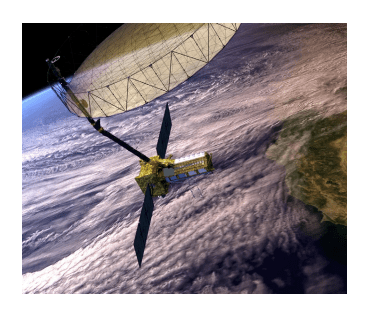The NESC Mechanical Systems TDT provides broad support across NASA’s mission directorates. We are a diverse group representing a variety of sub-disciplines including bearings, gears, metrology, lubrication and tribology, mechanism design, analysis and testing, fastening systems, valve engineering, actuator engineering, pyrotechnics, mechatronics, and motor controls. In addition to providing technical support, theTDT owns and maintains NASA-STD-5017, “Design and Development Requirements for Space Mechanisms.” Mentoring the Next GenerationThe NESC Mechanical Systems TDT actively participates in the Structures, Loads & Dynamics, Materials, and Mechanical Systems (SLAMS) Early Career Forum that mentors early-career…
Read MoreTag: NASA Engineering and Safety Center
NESC Assists in Heatshield Investigation
NASA’s uncrewed Artemis I mission launched from KSC on November 16, 2022. After a successful mission that included orbiting the Moon, the Orion spacecraft returned to Earth splashing down in the Pacific Ocean on December 11, 2022. While the spacecraft made a safe return to Earth, postflight inspection of Orion’s thermal protection indicated that the base heatshield did not perform as expected. The heatshield is composed of Avcoat, an ablative material designed to protect the crew module during the nearly 5000ºF temperatures experienced during atmospheric entry upon return from the…
Read MoreCollaboration Is Key to A Strong Materials Discipline
NASA has a strong need for advanced materials and processes (M&P) across the realms of robotic- and crewed-spaceflight, as well as aeronautics, particularly when one acknowledges that all craft must be made of something. To meet that need, the materials discipline relies on collaboration—both between centers and across disciplines. Reaching the Agency’s Moon-to-Mars objectives will require leveraging each center’s specific M&P expertise, cross-training among the centers, and routinely interacting with the 20-plus Agency disciplines like structures, space environments, and loads and dynamics. When a discipline touches all classes of materials;…
Read MoreCharacterizing the Visual Experience of Astronauts at the Lunar South Pole
Humans are returning to the Moon—this time, to stay. Because our presence will be more permanent, NASA has selected a location that maximizes line-of-sight communication with Earth, solar visibility, and access to water ice: the Lunar South Pole (LSP). While the Sun is in the lunar sky more consistently at the poles, it never rises more than a few degrees above the horizon; in the target landing regions, the highest possible elevation is 7°. This presents a harsh lighting environment never experienced during the Apollo missions, or in fact, in…
Read MoreContact Dynamics Predictions Utilizing theNESC Parameterless Contact Model
Download PDF: Contact Dynamics Predictions Utilizing theNESC Parameterless Contact Model Modeling the capture of the Mars Sample Return (MSR) Orbiting Sample (OS) involves understanding complex dynamic behavior, which includes the OS making contact against the interior of the capture enclosure. The MSR Program required numerical verification of the contact dynamics’ predictions produced using their commercial software tools. This commercial software used “free” parameters to set up the contact modeling. Free parameters (also known as free variables) are not based on contact physics. The commercial contact model used by MSRrequired seven…
Read More2024 NESC Technical Update
1 Min Read 2024 NESC Technical Update Annual Report of NESC Technical Activities On behalf of the NASA Engineering and Safety Center (NESC), I am pleased to provide you with the 2024 NESC Technical Update. This annual report summarizes the technical work, engineering advancements, and knowledge capture efforts we made in FY24. With support provided by members of our NASA community from across the centers, we focused our efforts on performing value-added independent testing, analysis, and assessments of NASA’s high-risk projects to ensure safety and mission success. This report contains summaries…
Read MorePart Ojibwe, All NASA: Linda Spuler’s Role in Protecting Johnson Space Center
Linda Spuler, emergency manager at NASA’s Johnson Space Center in Houston, believes that everyone has a story. “Our stories highlight what we have in common, but they also make us each unique,” she said. Spuler has worked at Johnson for over 32 years, spending most of her career in Center Operations. Her story has involved helping to coordinate emergency response teams at Johnson in preparation for natural disasters. “Since Johnson is situated on the coast, a good portion of my job revolves around planning for hurricanes,” she said. Spuler has…
Read MoreIdentification of Noise Sources During Launch Using Phased Array Microphone Systems
Identification of Noise Sources During Launch Using Phased Array Microphone Systems Every part of a launch vehicle, launch pad, and ground operation equipment is subjected to the high acoustic load generated during lift-off [1]. Therefore, many extreme measures are taken to try to suppress this acoustic environment by damping with a water deluge system and diverting engine plumes away from the vehicle via flame trenches. Even single decibel reductions of the acoustic levels can translate into a sizable reduction of acoustic loadings, certification needs, operational costs, and even vehicle weight.…
Read MoreTrajectory Reverse Engineering
A strategy for transferring spacecraft trajectories between flight mechanics tools, called Trajectory Reverse Engineering (TRE), has been developed[1]. This innovative technique has been designed to be generic, enabling its application between any pair of tools, and to be resilient to the differences found in the dynamical and numerical models unique to each tool. The TRE technique was developed as part of the NESC study, Flight Mechanics Analysis Tools Interoperability and Component Sharing, to develop interfaces to support interoperability between several of NASA’s institutional flight mechanics tools. The development of space…
Read More







